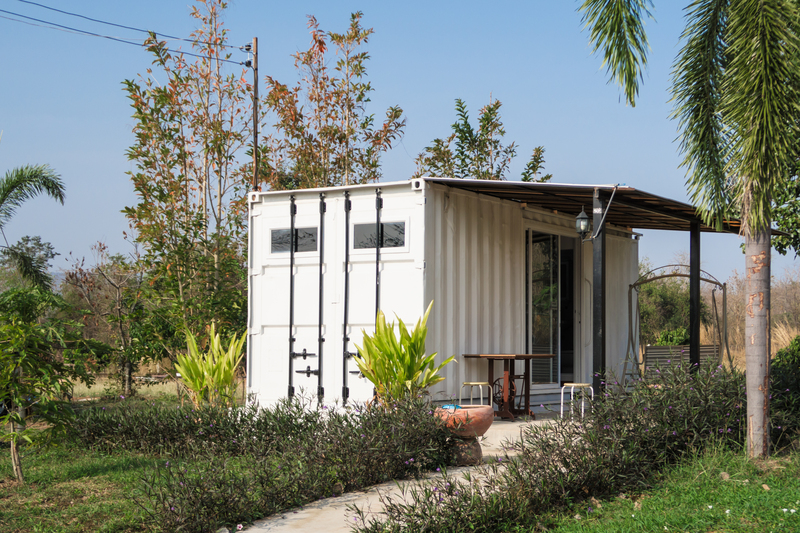Strategies for Reducing School Food Waste in the UK
Posted on 07/03/2025
Food waste is an urgent issue globally, but it holds particular significance in schools where both environmental consciousness and efficient resource management are crucial. The UK, like many other countries, faces challenges in managing and reducing food waste in educational institutions. This article outlines effective strategies schools in the UK can adopt to tackle this pressing issue.
Conduct a Food Waste Audit
Before implementing any strategies, schools should first understand the extent and nature of their food waste problem. Conducting a food waste audit is an excellent starting point. This can involve:
- Sorting and Measuring: Separate and weigh different categories of waste (e.g., vegetables, meat, packaged foods).
- Identifying Patterns: Determine which meals or foods are most frequently wasted.
- Reviewing Policies: Look into current food policies and serving practices.
Having a clear picture of waste can provide insights into specific areas needing attention.

Implement Portion Control
One common cause of food waste in schools is large portion sizes. Children often find it difficult to finish their meals, leading to significant waste. Implementing portion control can be an effective solution. Consider the following tips:
- Adjust Serving Sizes: Serve age-appropriate portions.
- Allow Seconds: Let students come back for more if they are still hungry.
- Educate on Serving Sizes: Train cafeteria staff on the importance of appropriate portions.
Engage Students and Staff
Building a culture that values sustainability involves engaging both students and staff. When everyone understands the impact of food waste, they're more likely to contribute to its reduction. Strategies to engage the school community include:
- Educational Campaigns: Offer workshops or assemblies about the environmental impact of food waste.
- Incentive Programs: Reward classes or students who excel in reducing food waste.
- Student Councils: Encourage student bodies to create waste-reduction initiatives.
Offer Choice and Flexibility
When students are given the choice and flexibility in their meal options, they're more likely to eat what they pick, reducing waste. Schools can:
- Multiple Options: Provide a variety of meal choices catering to different tastes and dietary needs.
- Avoid Pre-plating: Allow students to choose their foods rather than serving pre-plated meals.
- Healthy Snacks: Offer snacks that can be taken home if not finished, reducing waste while promoting nutrition.
Improve Menu Planning
Effective menu planning can significantly reduce food waste. Schools should:
- Seasonal Menus: Use ingredients that are in season to ensure freshness and lower costs.
- Feedback Loop: Collect student feedback to plan menus that are both nutritious and popular.
- Coordination with Suppliers: Work closely with suppliers to adjust orders based on consumption patterns.
Compost and Recycle
Not all food waste can be eliminated, but schools can ensure that it is disposed of responsibly. Composting and recycling initiatives can:
- Composting Programs: Create a composting system for organic waste, which can then be used in school gardens.
- Recycling Stations: Set up recycling stations in the cafeteria for different types of waste, such as plastics, paper, and organic materials.
- Education: Educate students about composting and recycling practices to ensure proper participation.
Monitor and Adjust
Continuous monitoring and flexibility in approach are vital for the long-term success of food waste reduction strategies. Schools should:
- Regular Reviews: Periodically review food waste data to gauge progress.
- Adjust Policies: Be ready to tweak menus, portion sizes, and waste management practices based on feedback and data.
- Community Involvement: Involve parents and local communities in waste reduction efforts for broader impact.
Pros and Cons of Reducing Food Waste in Schools
Pros:
- Environmental Benefits: Less waste means reduced environmental footprint.
- Cost Savings: Efficient food use can lower food costs.
- Educational Opportunities: Teaches students valuable lessons about sustainability.
Cons:
- Initial Costs: Implementing new systems can require upfront investment.
- Training: Staff and students need to be trained, which requires time and resources.
- Ongoing Monitoring: Continuous effort is needed to sustain improvement.
Tips for Success
- Start Small: Begin with easy-to-implement strategies and gradually expand.
- Involve Everyone: Make food waste reduction a school-wide initiative.
- Use Technology: Employ apps and software for better inventory and waste management.
- Celebrate Successes: Recognize and celebrate milestones to keep motivation high.

Takeaways
- Know Your Waste: Conduct thorough audits to understand your starting point.
- Engage the Community: Make it a community effort involving both staff and students.
- Be Flexible: Adjust strategies based on what the data tells you.
- Educate: Use food waste reduction as an educational tool to foster long-term change.
Conclusion
Reducing food waste in schools is not just an environmental necessity but also an educational opportunity. By auditing waste, engaging the school community, implementing effective menu planning, and responsibly disposing of inevitable waste, schools in the UK can make significant strides in tackling this issue. While challenges exist, the long-term benefits far outweigh the initial hurdles, contributing to a more sustainable future and fostering responsible habits in the next generation.


 office@benandjerry.org.uk
office@benandjerry.org.uk https://benandjerry.org.uk/
https://benandjerry.org.uk/

